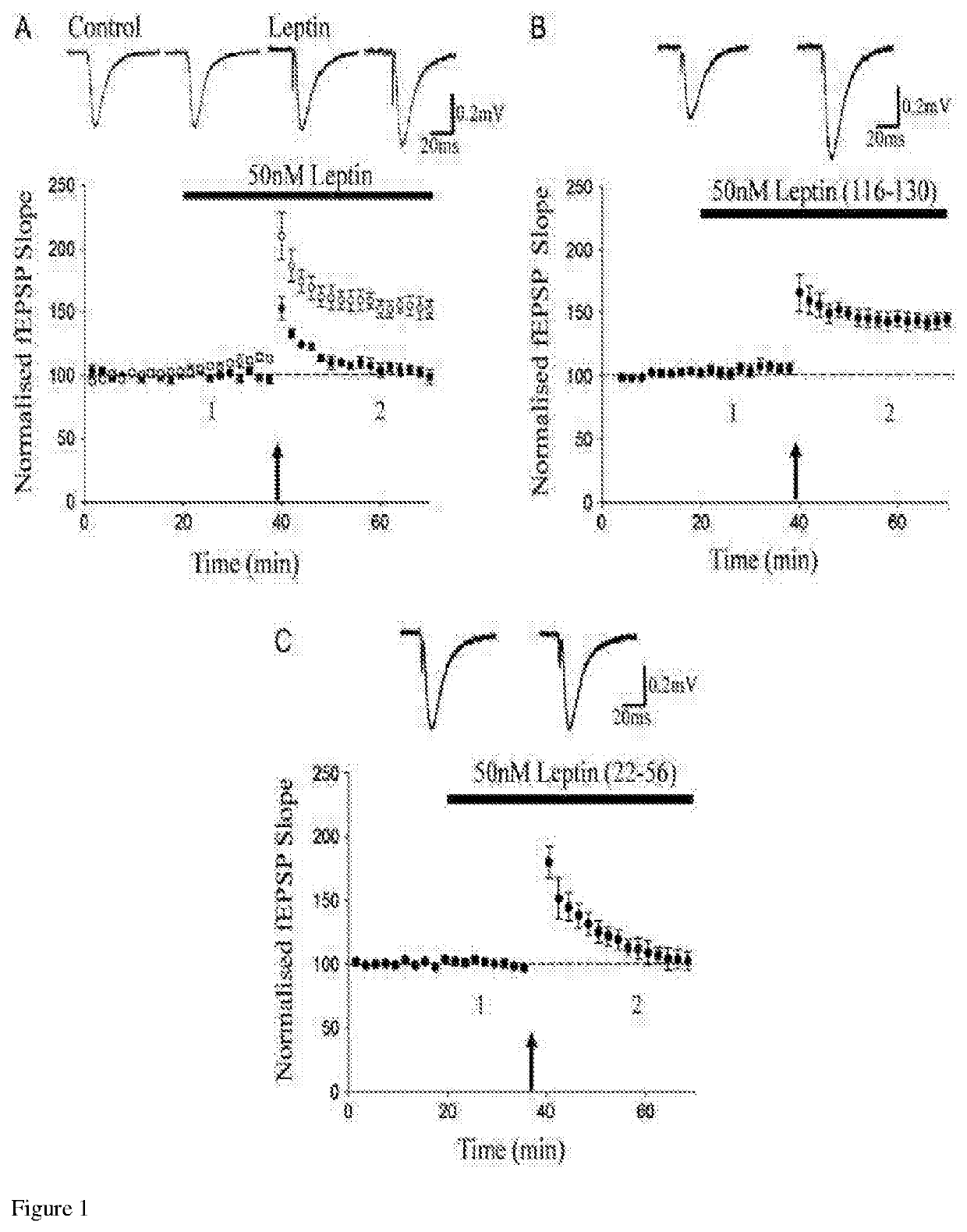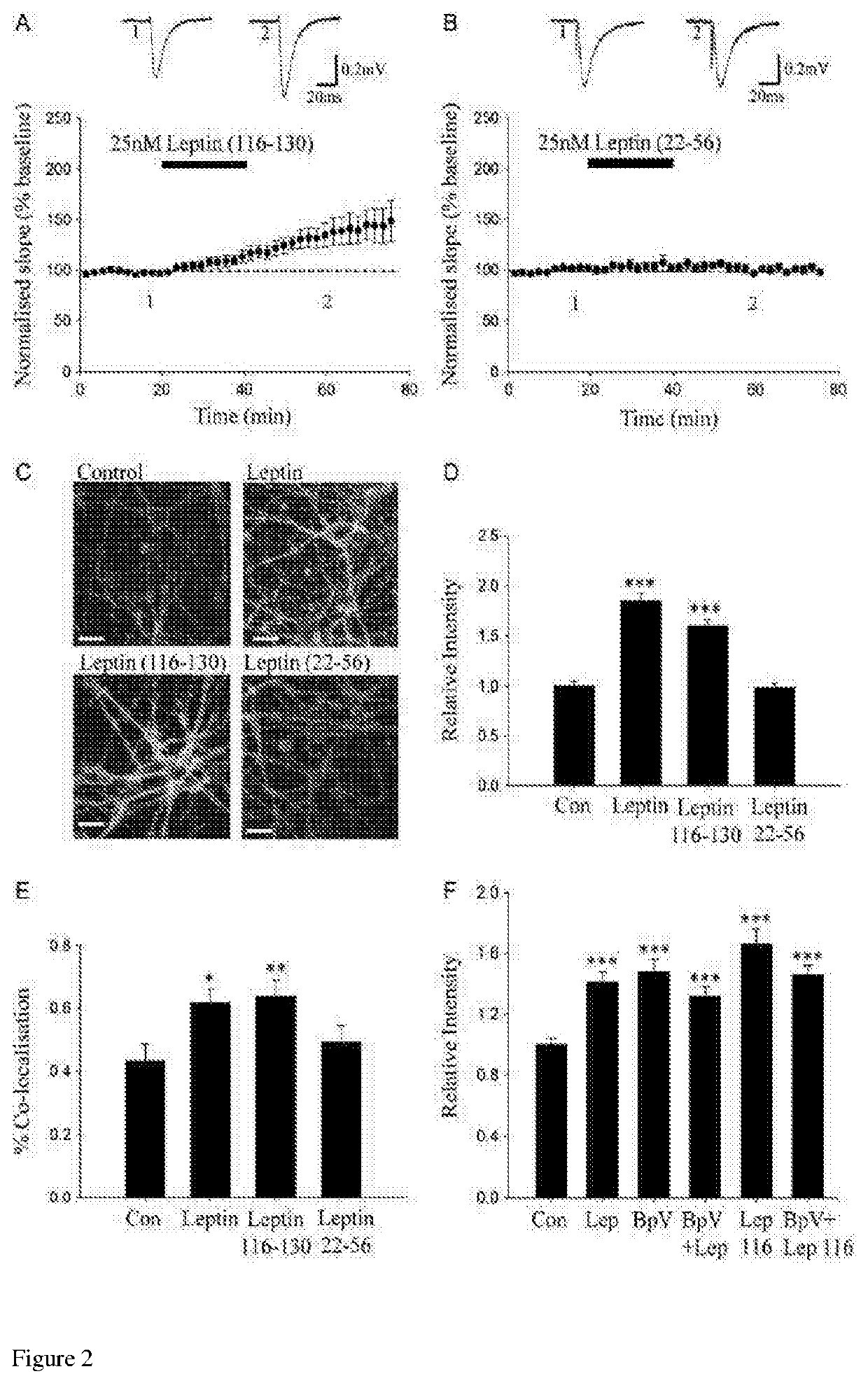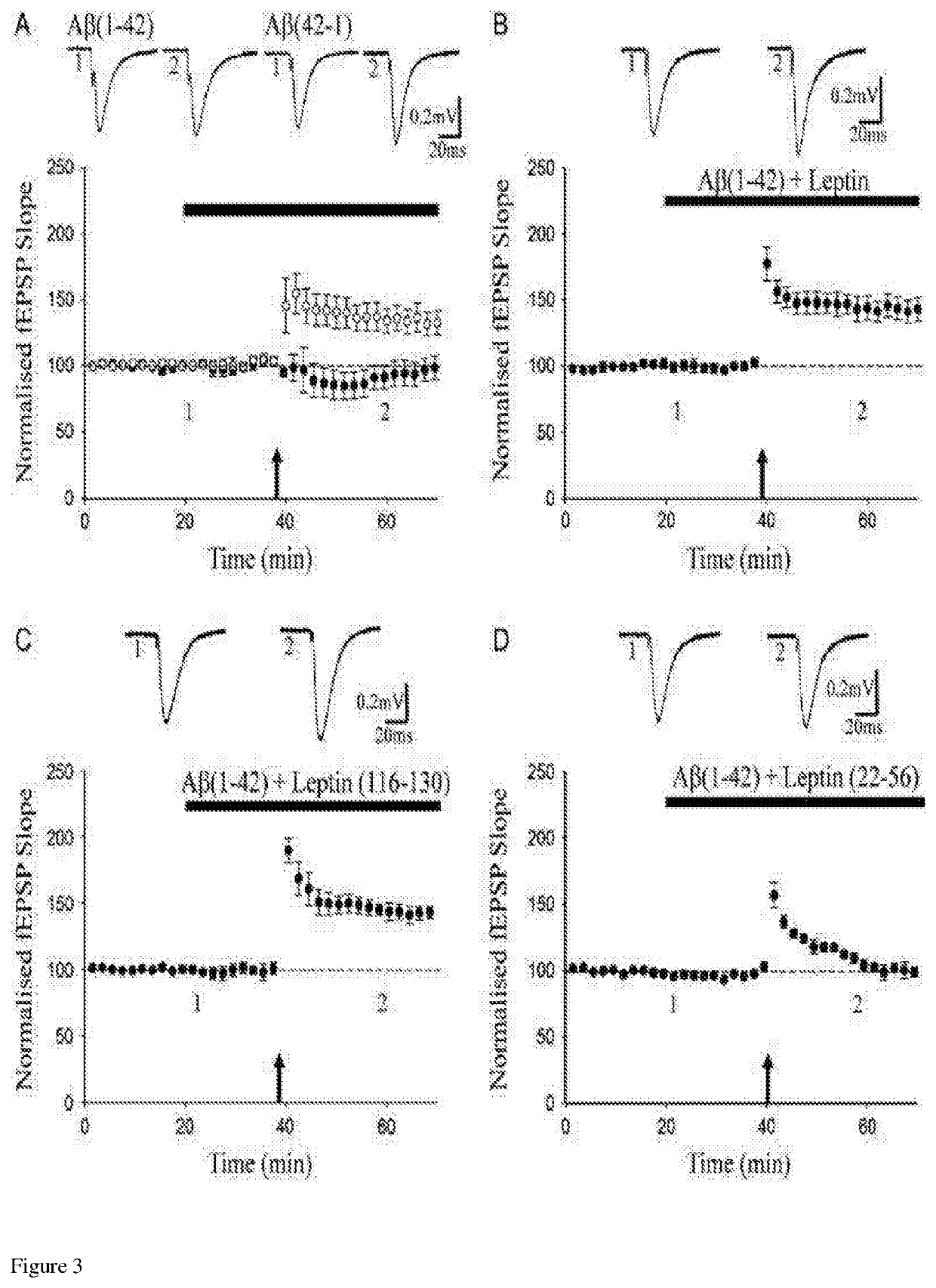Leptin peptides and their use for treating neurological disorders
a technology of leptin and neuroprotective properties, which is applied in the field of leptin peptide fragments, can solve the problems of unfavorable cognitive enhancement and neuroprotective properties of bioactive leptin fragments, and the use of leptin may not be the best approach, so as to improve the physical properties of the fragments
- Summary
- Abstract
- Description
- Claims
- Application Information
AI Technical Summary
Benefits of technology
Problems solved by technology
Method used
Image
Examples
Embodiment Construction
16-130) promotes conversion of STP into a persistent increase in synaptic transmission in juvenile hippocampus. FIG. 1A: pooled data showing that primed burst stimulation (indicated by the arrow) delivered in the absence of leptin induced STP (filled circle) in juvenile hippocampal slices. In contrast, in leptin-treated slices (open circle) the same stimulation paradigm resulted in a persistent increase in synaptic transmission. In this and subsequent figures, each point is the average of 4 successive responses. Top, Representative synaptic records (average of 4 consecutive records) are shown for the times indicated. FIG. 1B and FIG. 1C: during exposure to leptin (116-130; 50 nM), application of the primed burst stimulation paradigm resulted in a persistent increase in synaptic transmission FIG. 1B, whereas only STP was evident in slices treated with leptin (22-56; FIG. 1C);
[0099]FIG. 2A, FIG. 2B, FIG. 2C, FIG. 2D, FIG. 2E, and FIG. 2F show that in adults, leptin (116-130) induces a...
PUM
 Login to View More
Login to View More Abstract
Description
Claims
Application Information
 Login to View More
Login to View More - R&D
- Intellectual Property
- Life Sciences
- Materials
- Tech Scout
- Unparalleled Data Quality
- Higher Quality Content
- 60% Fewer Hallucinations
Browse by: Latest US Patents, China's latest patents, Technical Efficacy Thesaurus, Application Domain, Technology Topic, Popular Technical Reports.
© 2025 PatSnap. All rights reserved.Legal|Privacy policy|Modern Slavery Act Transparency Statement|Sitemap|About US| Contact US: help@patsnap.com



